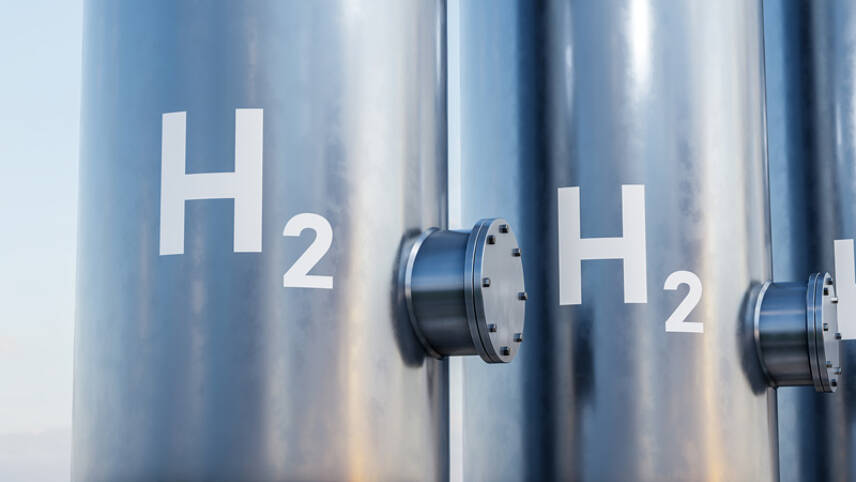Register for free and continue reading
Join our growing army of changemakers and get unlimited access to our premium content

Published by Westwood Global Energy Group on Tuesday (7 March), the analysis assesses the scale of the UK’s pipeline of green and blue hydrogen projects. Green hydrogen is produced by electrolysing water at facilities powered by renewable electricity, while blue hydrogen is made by splitting and processing fossil fuels and capturing process emissions using man-made carbon capture technologies.
The UK Government is aiming to scale blue and green hydrogen production to 10GW by 2030. At least half of this production capacity should be accounted for by green hydrogen. These targets were set through the British Energy Security Strategy last April.
Westwood’s analysis shows that the UK is set to meet the overarching target, with 17GW of capacity in the pipeline and due to come online this decade. But blue hydrogen accounts for the lion’s share of the pipeline – 14.3GW, or 84%. This leaves a green hydrogen pipeline of just 2.7GW, leaving the UK off track to deliver its 5GW target by 2030.
Given that most of the 45 hydrogen projects assessed by Westwood are being spearheaded by fossil fuel firms, it is perhaps of little surprise that there is so much interest in blue hydrogen.
Westwood states that the largest participant in the development of hydrogen projects in the UK this decade is Shell. The firm is involved in three blue hydrogen projects, collectively covering 3.3GW of capacity. Also responsible for 3.3GW of blue hydrogen capacity in the pipeline is Vertex Energy, a joint venture between Essar and Progressive Energy.
Westwood has stated that, compared to blue hydrogen, the green hydrogen pipeline is “much more fragmented, with smaller project sizes and a higher number of developers”.
Blue hydrogen has proven controversial with environmental groups. A key concern is that man-made carbon capture technologies are in their relative infancy at a commercial scale, with many large arrays capturing lower proportions of emissions than originally intended. The Environment Agency is recommending that all blue hydrogen project developers aim for a 95% carbon capture rate or fully explain why they are not able to. This feeds into the UK Government’s development of a low-carbon hydrogen standard, which developers must meet to access public funding.
Debate around the practicalities of blue hydrogen has only intensified amid the energy price crisis. The spike in gas prices will have changed the business case for blue hydrogen, but the UK Government’s cost-benefit analysis is based on pre-energy-crisis prices.
Not a guaranteed pipeline
It bears noting that many of the projects assessed by Westwood – both blue and green – are not likely to go ahead without further policy intervention to support the rapid growth of this nascent sector.
Westwood’s head of energy transition David Linden said: “There is no shortage of money or willingness across the industry; however, stakeholders are under no illusion that it will still take a herculean effort to ensure the success it’s capable of.”
The organisation’s director of hydrogen Joyce Grigorey added: “Global competition is quickly heating up and any delay in the government’s steer could have adverse consequences for the UK’s hydrogen ambitions should investors believe they can gain higher returns elsewhere.
“But with a collaborative push, the UK could become a leader of a successful hydrogen economy, with significant strides already being made across blue and green hydrogen, and carbon capture and storage.”
Key interventions from policymakers, the report states, will be the finalisation of the low-carbon hydrogen standard and the hydrogen business model. An absence of definitions and clarity on long-term funding ability is stunting investment at present, the report argues – particularly following the political unpredictability of last year, when the UK saw two consecutive changes in Prime Minister in less than six months.
The Hydrogen Business Model is a contractual set-up designed to help low-carbon hydrogen production projects access ongoing revenue support from private and public sources in the long-term, thus de-risking the investment process. It was first confirmed in August 2021 and a final agreement on its design is expected in the first half of 2023.


Please login or Register to leave a comment.